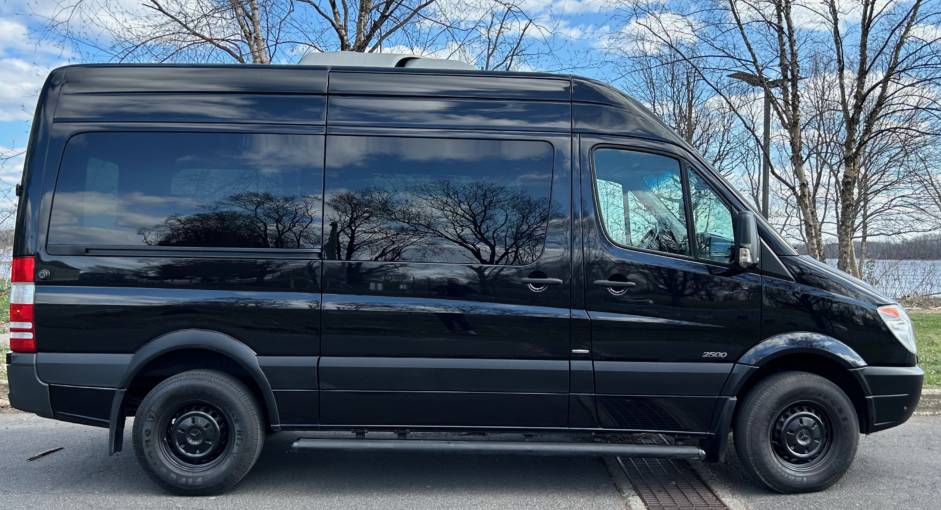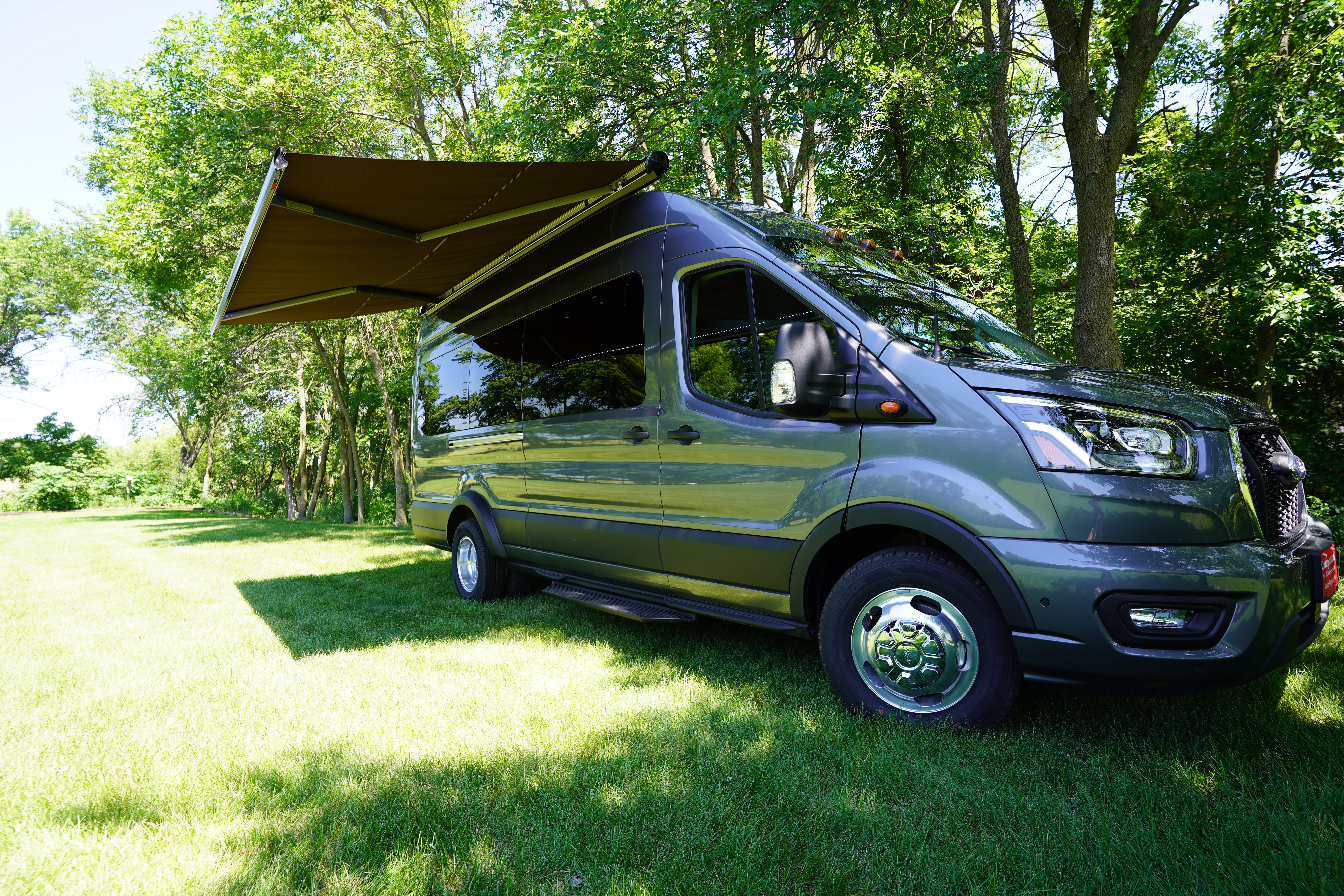NEWS
Sprinter vs. Transit: Tracing the Legacy of Two Commercial Van Giants: A Tale of Two Titans
Commercial vehicles are the backbone of logistics, service industries, and small business operations worldwide. Among the leading models, the Mercedes-Benz Sprinter and Ford Transit have emerged as dominant players, shaping the modern commercial van landscape. Each has followed a unique path marked by corporate transitions, brand shifts, and evolving production strategies.
The Mercedes-Benz Sprinter: Innovation Through a Complex History
First launched in 1995 by Mercedes-Benz, the Sprinter van quickly earned recognition for its spacious cargo capacity, impressive fuel economy, and long-term durability. But while the van itself remained consistent in performance, its brand identity has taken several detours—especially in the U.S. market.
In North America, the Sprinter was originally introduced under the Freightliner badge in 2001, followed by a version sold as a Dodge beginning in 2003. This branding move came during the DaimlerChrysler era. However, after Daimler and Chrysler split in 2007, Dodge lost its licensing rights to the Sprinter. From that point forward, the Sprinter continued only as a Mercedes-Benz and Freightliner product in the U.S.
These transitions often spark the question: why would a successful vehicle be shuffled between brands? The answer lies less in the van’s performance and more in the corporate complexities of the global auto industry. Strategic partnerships, mergers, and brand realignments frequently lead to rebranding, even for high-performing vehicles.
Despite the branding shifts, Mercedes-Benz has continually refined the Sprinter, adding advanced safety features, driver comfort upgrades, and fuel-efficient engines—keeping the model competitive in a demanding market.

Ford Transit: A Legacy of Stability, Versatility, and Global Success
While the Mercedes-Benz Sprinter navigated a winding path through brand transitions, the Ford Transit has charted a steady and enduring course. Since its debut in 1965, the Transit has become a global icon in the commercial van market, known for its reliability, adaptability, and long-standing dominance in both Europe and North America.
A Global Workhorse Since 1965
The Transit was introduced in Britain with both long and short wheelbase options, a range of rear door configurations, and versatile cab designs—an early indication of Ford’s commitment to adaptability. Its utility and rugged design made it an instant success, with sightings of the Transit as far afield as the Andes Mountains, where it was operating on bus routes at elevations of 14,000 feet by 1966.
Ford’s creative flair emerged in 1972 with the introduction of the Transit Supervan, a promotional model built on the frame of the legendary GT40 race car. Capable of speeds up to 150 mph, it showcased the Transit’s performance potential in dramatic fashion. Just four years later, Ford celebrated a milestone: the one-millionth Transit rolled off the production line in 1976, confirming its position as a commercial vehicle favorite.
Expanding the Transit Family
Over the decades, the Transit lineup has evolved to meet a wide range of business and lifestyle needs. Variants now include the Transit Custom, Tourneo, Connect, Courier, and Kombi, along with motorhomes and campervans built on the Transit chassis. This diversification has allowed the Transit to serve everything from urban delivery routes to cross-country campervan travel.
In 1997, Ford began production in Nanchang, China, through a joint venture with Jiangling Motors, expanding the Transit’s reach into Asian markets. Production for North America began in 2014, replacing the E-Series van, and by June 2021, Ford had produced one million Transit vans in the region—further proving its transcontinental appeal.
Award-Winning Recognition
The Transit’s consistent quality, innovation, and global appeal have earned it widespread recognition over the years. It holds the distinction of winning the International Van of the Year (IVOTY) title more than any other model, taking top honors in 2001, 2003, 2007, 2013, 2014, 2020, and most recently, 2024 for the all-new Transit Custom. In the United States, the Transit was named 2025 Commercial Van of the Year by Work Truck magazine readers, marking a consecutive win and further solidifying its reputation for reliability and fleet-focused performance. Additionally, the 2025 Vincentric Best Fleet Value in America award was given to the Transit T‑350 XLT Low Roof RWD in the full-size one-ton passenger category—highlighting its lowest-in-class lifecycle costs. These accolades reflect the Transit’s continued dominance as a reliable, efficient, and well-designed commercial van, trusted by businesses and fleet managers across the globe.
A Tale of Two Vans: Sprinter vs. Transit
The Mercedes-Benz Sprinter and Ford Transit are two of the most recognized names in the commercial van market—each with a very different journey. The Sprinter, though a viable option, has faced its share of issues over the years, from reliability concerns to costly repairs, all while navigating changes in branding and ownership. Despite these hurdles, it has maintained a foothold in the industry. In contrast, the Ford Transit has followed a more stable and consistent path, backed by decades of proven performance, widespread adoption, and a reputation for long-term dependability. Its enduring success and global reach make it the stronger and more trusted option for many businesses, RV manufacturers, and commercial vehicle buyers.
Transit: Consistency, Versatility, and Innovation
The Ford Transit has become more than just a van—it’s a cornerstone of the commercial vehicle world. Known for its reliable performance, wide range of configurations, and ability to adapt across industries, the Transit remains a top choice for businesses of all sizes. In the UK, its impact is so significant that "Transit" has become a generic term for large vans—a clear reflection of its dominance and brand recognition. Often called the "Backbone of Britain," the Transit continues to prove its value in commercial, personal, and recreational applications, including van-based RVs and campervans.
Ford has also ventured into electrification with the E-Transit, its first all-electric cargo van. While the E-Transit shows Ford’s commitment to sustainability and urban fleet innovation, it has not gained significant traction in the RV or campervan market. The primary concerns are its limited range between charges and the lack of widespread EV charging infrastructure, especially in remote or off-grid travel scenarios where RV users typically venture. As a result, many buyers still favor the traditional gasoline-powered Transit models for their long-distance capabilities, refueling convenience, and broad support network.
Sprinter: Prestige, Performance, and Resilience
Despite brand handoffs and shifting marketing strategies, the Mercedes-Benz Sprinter has stood firm as a symbol of premium utility. Known for its refined design, safety technologies, and diesel-powered efficiency, the Sprinter continues to evolve in response to customer needs and competitive pressures. Mercedes-Benz has kept the Sprinter ahead of the curve through continual updates to its technology suite, cabin comfort, and drivetrain options.
Two Icons, One Market
Although their paths have diverged, both the Ford Transit and the Mercedes-Benz Sprinter have established themselves as cornerstones of the global commercial van market. The Transit stands out for its practical design, strong reliability, and extensive dealer and service network, making it the preferred choice for businesses and RV manufacturers that value ease of maintenance and nationwide repair access. In contrast, the Sprinter tends to attract those who prefer a diesel drivetrain and are comfortable with higher maintenance costs and more limited service availability, often in exchange for modest gains in fuel economy.
While each model appeals to a different type of user, both continue to evolve in response to market demand—balancing performance, comfort, and utility. For companies, van-based upfitters, and RV travelers alike, the Transit and Sprinter remain two of the most viable platforms on the road today.
Learn more about the Mini-T HR Campervan built on the Reliable Ford Transit Chassis
DLM-Distribution / Campervans is a licensed manufacture and dealer located in Lake Crystal Minnesota serving clients around the country
Contact Dave: 651-285-7089 or Candy: 507-382-9446 today!

